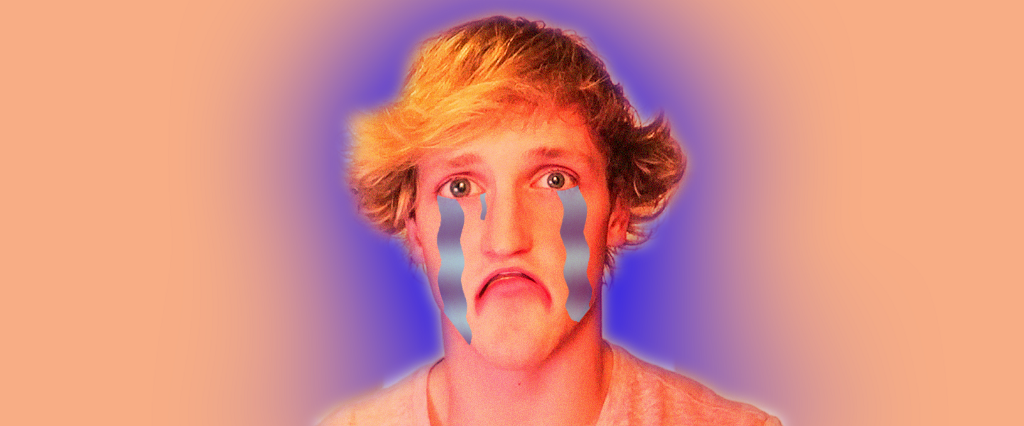At the beginning of this year, Logan Paul, the bleach-blond, muscle-bound YouTube megastar and the older half of the Paul video dynasty, posted a dimly lit webcam video. Lacking intro music, graphics and sound effects, it was unlike most of the other content published to his channel, which usually shows the former Disney star pulling pranks in his L.A. mansion, travelling around the world, driving monster trucks and hanging out with his diehard fans, who he calls the “Logang.” “I had a severe and continuous lapse in my judgement,” the remorseful, red-eyed Paul explains in the video entitled, “So Sorry.” “I don’t expect to be forgiven. I’m simply here to apologize.”
“So Sorry” is among YouTube’s most viral videos in 2018. It’s racked up more than 52 million views and four million comments. There are also hundreds of videos on YouTube reacting to the apology. And there are plenty more dismissing it, describing it as disingenuous and inauthentic and considering Paul as nothing more than a YouTuber who finally flew too close to the sun. Some have referred to Paul’s apology as the “first viral apology video,” a visual example of a modern celebrity fall from grace, played out in real time.
Paul recorded his apology video after he received immense criticism for filming a dead body in the Aokigahara Forest, which is a notorious spot in Japan for people to commit suicide. The video was part of Paul’s daily vlogging — raw insight into the YouTuber’s life, presented with shaky camera work and first person POV shots. Like hundreds of young people who make six-figure salaries from vlogging, Paul had built an entire career out of appearing honest and vulnerable. So when Paul’s apology was posted, it was inevitable that the internet would ask itself the same question: Was Paul being authentic, or was this yet another performance, cloaked in PR-enforced sincerity?
It’s not just Logan Paul to whom this question has been asked. In 2016, YouTuber Sam Pepper issued a public apology after he was criticized for filming pranks that included convincing someone that their best friend was dead, and groping women while pretending to ask for directions. KEEMSTAR, a YouTuber who talks about personal beefs between other YouTubers, issued an apology video that same year, too. Entitled “We Got It Wrong, Sorry, Will Do Better,” it was a mea culpa for falsely accusing a man of being a pedophile, resulting in his personal details being doxxed. In 2017, PewDiePie, who runs a gaming channel, issued an apology after a video of him using the N word on a gaming stream was made public, resulting in a loss of sponsorship and the contract for a YouTube TV show. In his apology interview, PewDiePie, real name Felix Kjellberg, said:
“It’s not that I think I can say or do whatever I want and get away with it. That’s not it at all. I’m just an idiot. I’m really sorry if I offended, hurt or disappointed anyone with all of this. Being in the position I am, I should know better. I owe it to my audience and to myself to do better than this, because I know I’m better than this.”
“There’s an art to apologizing effectively in public,” argues Edwin Battistella, an American linguistics scholar and author of the 2014 book Sorry About That: The Language of Public Apology. “Often it’s the language that’s the tell of a bad apology. It’s not about apologizing, but the terms that are used to precede or succeed it.” For Battistella, there are four key factors when it comes to an effective apology:
- Being specific about what you’re apologizing for.
- Taking responsibility for the action.
- Indicating that the apology is leading somewhere.
- And most importantly, not making excuses for your actions.
At the time Battistella published his book, he referred to a pre-YouTube age and focused on political scandals, ranging from the Monica Lewinsky affair to George W. Bush “apologizing” for the Iraq War and Hillary Clinton testifying before Congress about Benghazi. Despite the difference in scenario, Battistella’s argument on why so many public apologies felt inauthentic remains the same: The apologizer never directly names their fuck-up and refuses to take full responsibility for it. On that latter count, for politicians, that would mean resigning from their posts. For YouTubers, it would mean leaving the platform they’ve built their entire lives and careers on.
“The problem with YouTubers is that when they want to talk about something serious, or make an apology, they do it in an overproduced, overemotional way to get people to watch the video,” says YouTuber Bobby Burns in his 2017 video, “How to Emotionally Manipulate Your YouTube Audience.”
In his video, Burns describes how YouTube apologies are becoming their own genre of content, “designed to emotionally manipulate viewers. The first sign you have to watch out for is the big sigh at the beginning. You’ve heard it before. The sigh is a big manipulation technique. It tells your audience you’re dealing with something sad, and something emotional and that they should buckle in. It’s funny how this exact technique is used by so many YouTubers.”
It’s not just the sigh either. Burns describes myriad techniques YouTubers use to manipulate audiences when they apologize — ranging from deliberately not looking into the lens of the camera to express a false sense of vulnerability, filming themselves turning the camera off to reinforce the idea that the video was completely unedited and spontaneously crying midway through. It’s a kind of crying Burns says “isn’t how normal people cry when they’re remorseful. When you cry in real life, it’s an ugly crying. But with these YouTubers, they cry and still look great, their makeup is still in one place. No one does that in real life!”
Burns’ video illustrates the central problem with the apology in the YouTube age: YouTube celebrities are given incentives to document and monetize every part of their lives for the platform’s ever-growing tween viewership (20 percent of YouTube’s viewers are under 15 years old, and they spend more time on the platform than any other social media network). In a digital economy where millions of eyeballs are locked onto you every day, where being seen as “inauthentic” can spell the end of a career, and where sponsors and advertisers have loosely defined expectations of how they expect YouTubers to conduct themselves, how can remorse, sincerity and atonement be expressed? Moreover, can a YouTuber successfully attain redemption for their misdeeds while continuing to make a living off the platform that encouraged them to fuck up in the first place?
“If you’re sincere about an apology, you don’t do it on YouTube,” says Taylor Lorenz, a writer at The Atlantic who reports on technology and internet culture. “You can give out a public statement on Twitter, talk to a journalists or perform the act of an apology in private, rather than using this tried-and-tested, 10-minute video format where you’re really just looking for sympathy and making sure your fans are still buying merch. It comes across as disingenuous.”
It’s a type of apology, though, that obviously benefits YouTubers, Lorenz says, because “they’re just asking their fans to give them the benefit of a clean slate, and let them continue doing what they do. That means nothing really changes and all it shows is that many YouTubers aren’t ready to face the real-world consequences of their actions.”
That doesn’t necessarily mean that YouTube apologies can’t be effective or sincere, Lorenz adds, but regardless of how the format changes, apologies can only work if the person making them “puts in the work to actually make a change.” As such, she recommends YouTubers, “Make [the apology] brief, not framing it as a mea culpa and seeking sympathy, and certainly, don’t frame the apology so it does well on YouTube’s algorithm.” More importantly, she adds, “they need to put themselves in positions where their actions can really be scrutinized, whether that’s with journalists, or with other YouTubers who can call them out.”
“The point is that YouTubers shouldn’t be asking fans to do the heavy work, and they shouldn’t be getting fans to hold them accountable for their own bad behavior.”
Admittedly, some of this is happening now. Earlier this month, for example, Paul sat down for a long, critical interview with YouTube personality Casey Neistat, in which the latter called out Paul on his poor decision to go to the Japanese forest without researching it, and wider issues to do with cultural insensitivity. The h3h3 podcast, a popular YouTube channel that interviews YouTube celebrities, also has called out YouTubers who conduct unethical activities or perform harmful stunts on the general public in order to grow their channel. Meanwhile, YouTubers are becoming more honest about the process of creating content, particularly its toll on their mental health — a problem that, according to Neistat and other big creators, is a “huge, but rarely spoken of” concern in the wider YouTube community.
For that at least, they should refuse to apologize. Or only apologize for how long it’s taken them to confront it.

